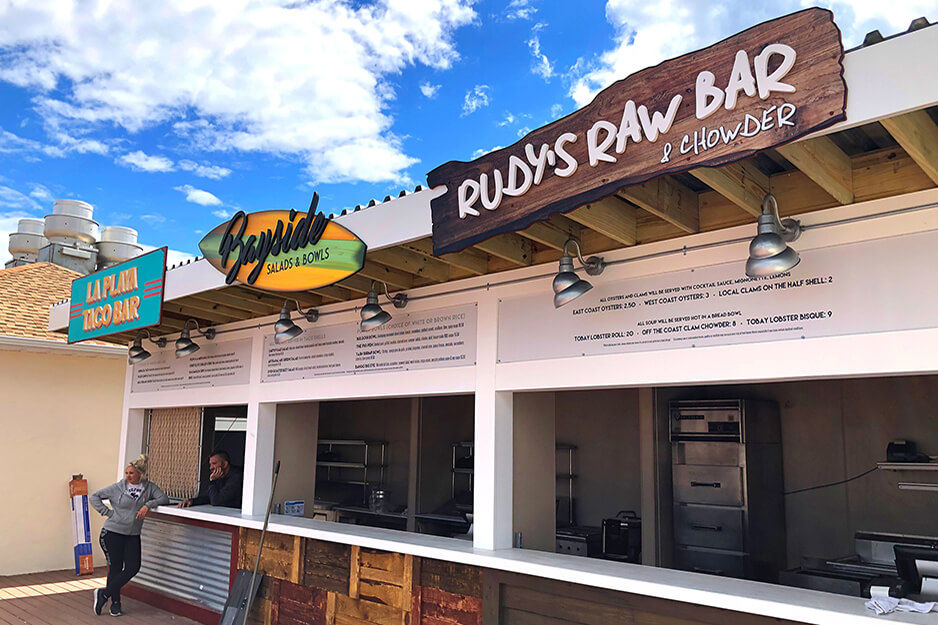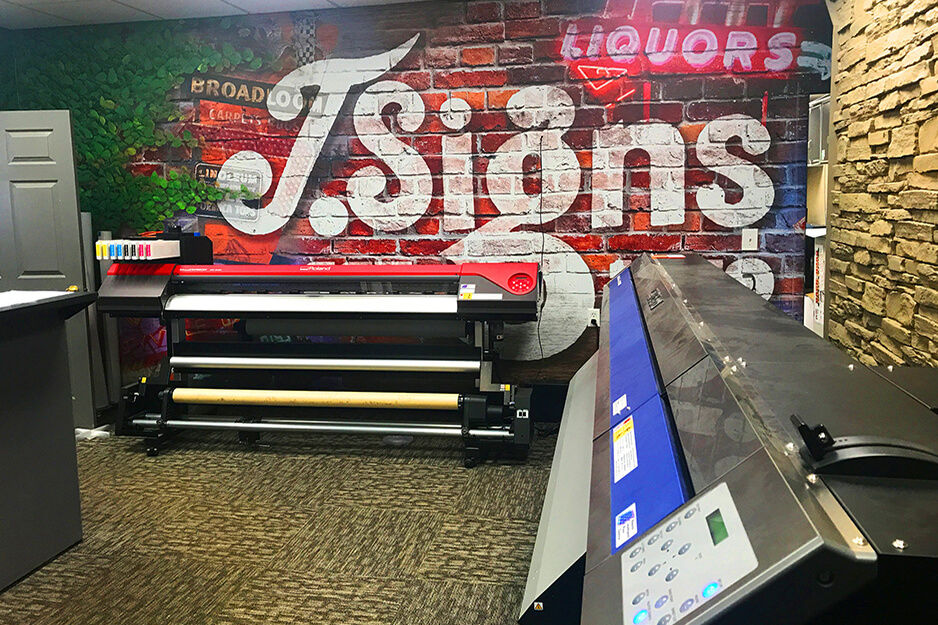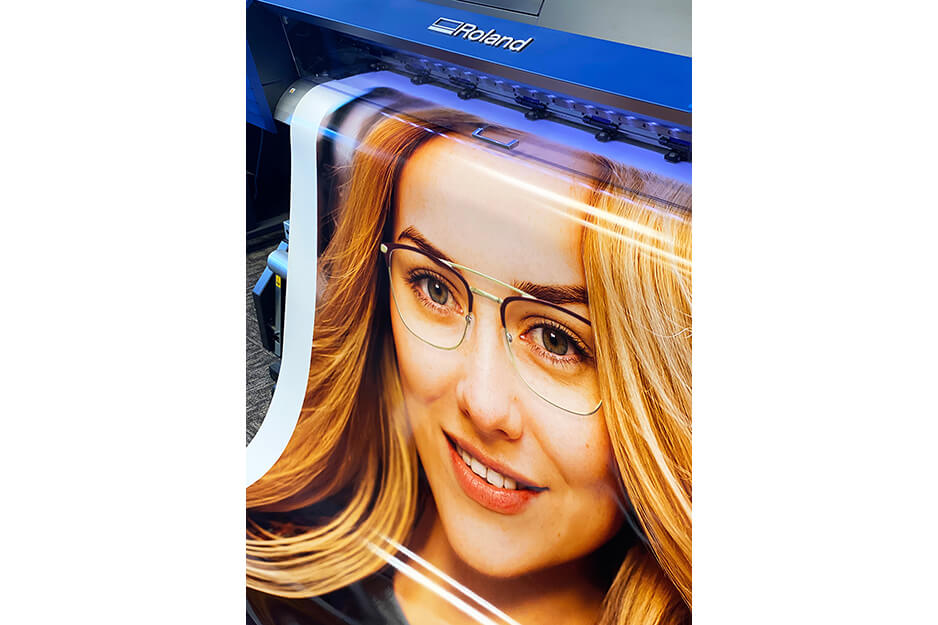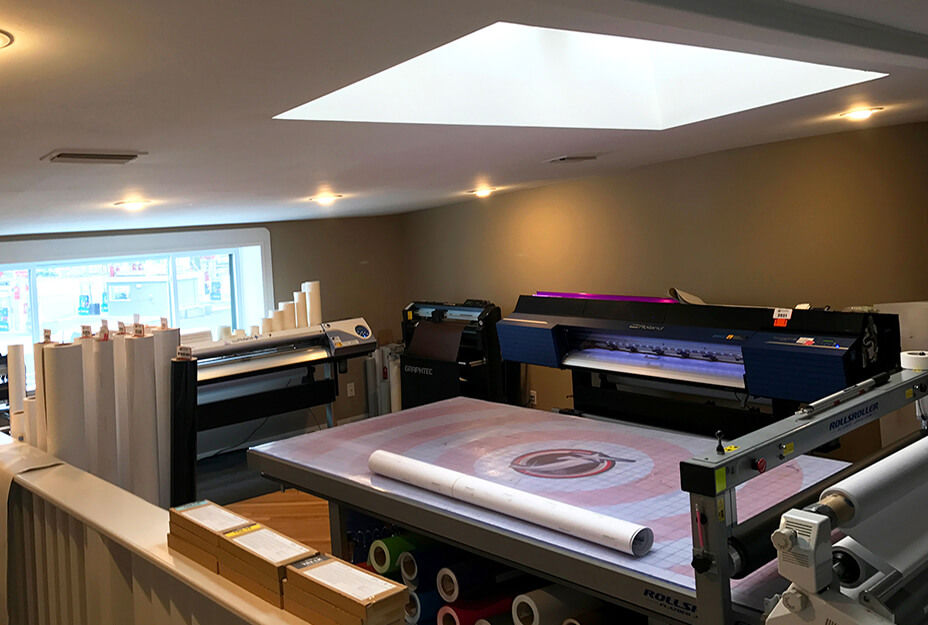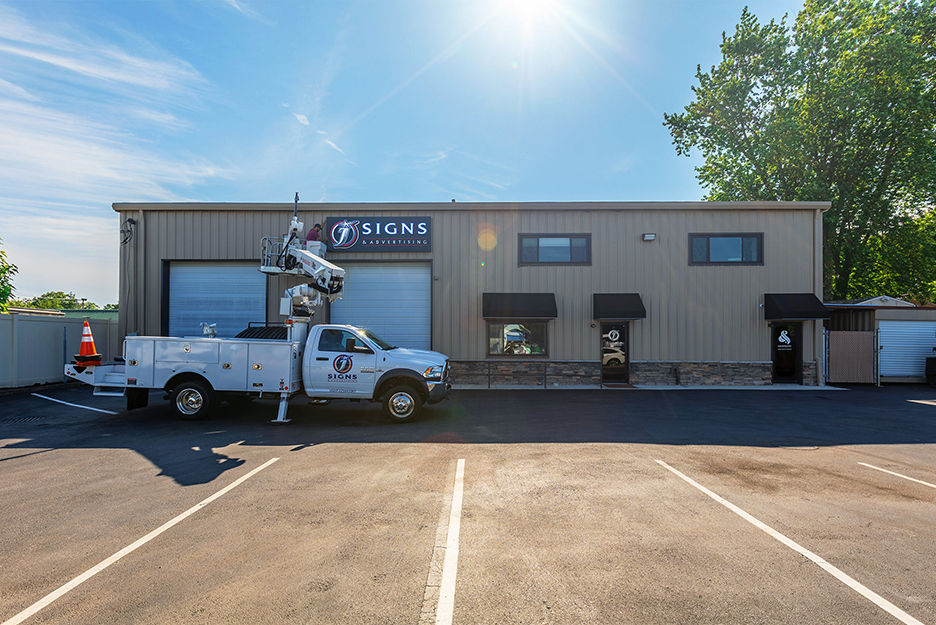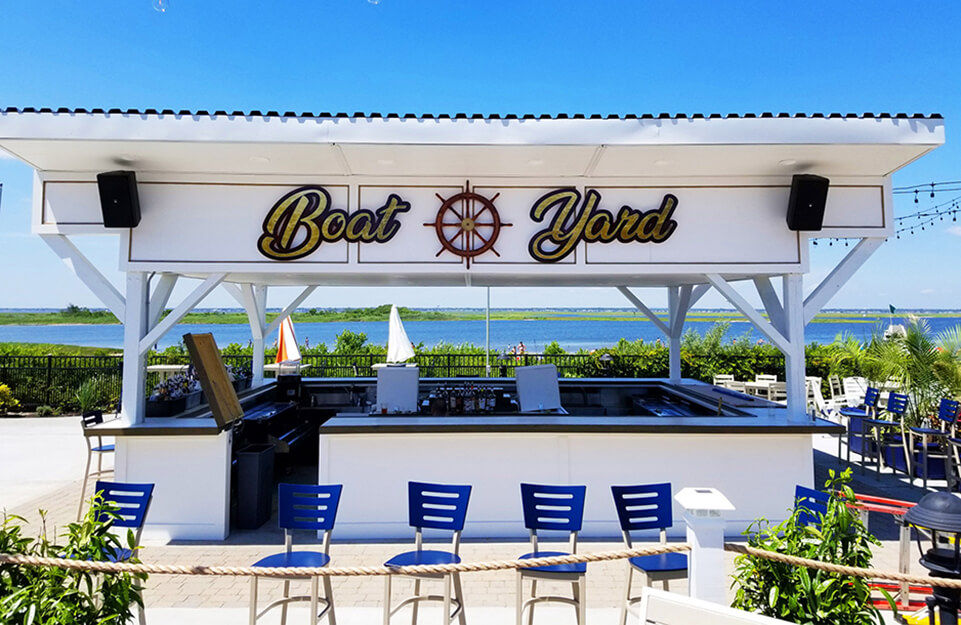Riding the Waves of Change on Long Island, New York
J Signs | Patchogue, New York
Jerome Morello, owner of J Signs in Patchogue, New York, has seen a lot of change since his father first opened the shop in 1979. Lately, it has been the effects of COVID-19, but prior to that, his community experienced and recovered from hurricanes and economic downturns – many things have happened over the shop’s 40-plus years in business.
We talked with Jerry about his company’s roots, how they are weathering the recent crises, and what lies ahead for this historic shop.
Tell us about how J Signs started?
My dad, Jerome Morello, started the company back in 1979. In the early years, my dad did hand lettering and gold leaf. I grew up in this business, working on weekends and during the summers.
After I finished college, I worked for Grumman Aerospace for two years. When vinyl graphics started coming into play, my dad would ask me to come after work to help him with using a computer. By the time I made the change to working here full time, I knew every part of the business.
What do you find most useful about having grown up in the sign business?
I think it’s really important for an owner to know how to do everything. We are still heavily technology based, and it’s really helpful to understand that piece of it, along with signmaking, installation and customer service.
“Over the years, I've found that bringing in new technology forces you to evolve, and you have to keep up with the latest and greatest to stay competitive.”
Also, after all those years, I have the perspective of seeing trends over time. You may have noticed that neon is coming back right now – it’s a retro look for some of the newer retail outlets. Neon is still high maintenance, but now it can be simulated with LED technology – which provides a cost savings. Having learned about neon years ago makes it easier to work with now.
What equipment do you have in your production area these days?
We have six Roland DG inkjets, including two TrueVIS VG2-540 54-inch large-format printer/cutters we bought this year. We also have two SP-540Vs, a SOLJET XR-640 and a VersaEXPRESS RF-640. We like Roland DG printers because they’re what we first started out with. Their equipment is very user friendly, and it performs really well. Other companies’ equipment just didn’t work out for us. We also have four dedicated cutters and a thermal printing system.
Over the years, I’ve found that bringing in new technology forces you to evolve, and you have to keep up with the latest and greatest to stay competitive.
Tell us about your facility – how is it laid out?
My dad and I built this building together, and we’ve been here since 1987. It’s two stories, 4,800 square feet, with two designers working upstairs and four production people and designers downstairs. Everyone has a printer they work with – so there’s never a time they can’t get work done because someone else is using the printer. We have a total of seven full-time employees, and we have our own fleet of bucket trucks.
We also have our own server. All the files we create for our clients are on our server, both here and in an off-site backup. My IT guy maintains our clients’ information, and we can access any files we have ever created for them. Our ‘bread and butter’ is using those logo files to help clients create additional signage. Since we can access the files easily, sometimes clients just ask us to send a vector file to a publication for them. It’s all about building those relationships.
What are your specialties, and how has your business evolved over the years?
We pride ourselves on our versatility. We make carved PVC signs and we do vehicle wraps, event signage, posters, banners, –Illuminated signs– whatever we can get. I’ve done probably 80 percent of the signs in town, which is really satisfying to me.
Being in business so long, we understand the general architectural criteria for each municipality on Long Island. For example, if you go further east toward the Hamptons, you have to be conservative with the signage. Towns there will dictate certain criteria and outline how they would like the sign designed and produced.
We work with companies of all sizes, and we do a lot of signage for restaurants. So, if a client comes in and is opening, say, a microbrewery, the first question I ask is “Where are you located?” The next thing we need to do is call the town officials. Some locations are in D1 historical districts. We are not going to do a really modern sign on that.
When we’ve figured out the exact parameters from the municipality, we’ll walk the facility with the client, discuss concept ideas, and figure out the budget. Then we’ll sit down with them and their architect and design everything from the logo on up. It saves a lot of time and money to get those details in place, otherwise you end up designing something that will never get approved by the architectural review board.
What’s your advice for other shop owners?
The world has really changed in terms of how quickly people expect products to be made and delivered. If you can meet those fast deadlines, you will be able to continue in this business. If you you’re not able to change and adapt, you won’t survive.
You also need to be careful about how you price your work. There’s a lot of competition out there, but if you price jobs too low, you won’t stay in business.
One thing we do consistently is support our community. We sponsor Little League teams, and we try to help out all the nonprofits that come in. We also take time out to create birthday banners, military welcome home signs, and graduation signs – we like to help people celebrate.
How has your business been impacted by COVID-19?
Before the pandemic, I wasn’t typically involved in a lot of the actual sign making. But as a sign manufacturer, our shop was deemed essential early on, and with fewer staff on hand, I have had to do more of the work myself.
We’ve been doing a lot of print jobs for hospitals. They need a ton of signage for their existing and newly created facilities, ranging from floor markers and room numbers to directional signage and laundry room labels.
As we’re all adjusting to the ‘new normal,’ I do front end stuff in the shop too – so it’s a good thing I know the business well.
We’re also doing a lot of restaurant curbside pickup signage and social distancing signs. The pandemic has totally changed everything.
What are you seeing as the next trends in signage?
Eventually, I expect things to shift more toward dynamic digital signage. The new signage will be kiosks with different messages – ‘you are here, here’s what’s nearby,’ etc. Tech is changing and getting much more interactive. You’re already seeing it with Amber alerts or Silver alerts – all the information is right on the screen. The content management aspect of signage is also changing significantly.
